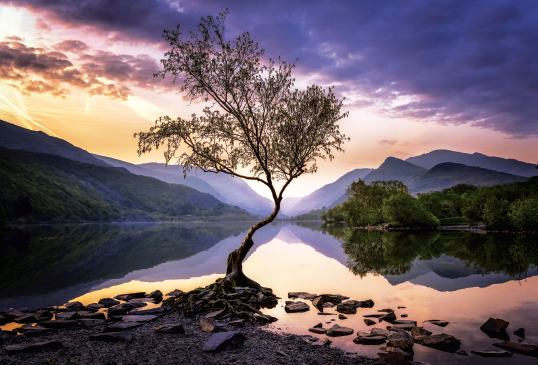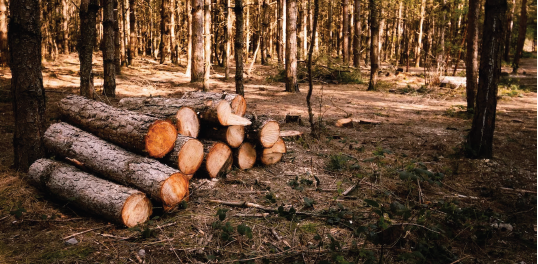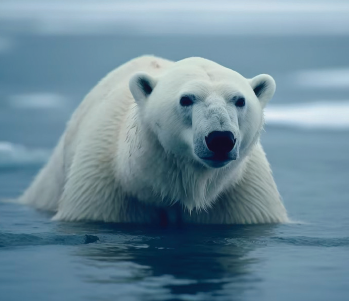The impact of climate change on flora and fauna is prompting remarkable genetic adaptations, as highlighted by recent studies, but this does nothing to calm the concerns of endangerment of species that looms over us
By Barish Raman
- It is indisputable that life finds a way and nature heals herself and this is becoming more and more noticeable
- Researchers found fresh evidence that some warm-blooded animals are undergoing physical changes as a result of climate change
- Varying adaptations in different biodiversity in the world have proven both of the theories to be substantiated with proof
- The polar bears’ habitat became divided as the ice disintegrated, which led to a significant rise in genetic isolation and inbreeding
When the cult classic, ‘Jurassic Park’ was released in 1993, it gave way to an iconic dialogue that proves itself to be true now, “life finds a way”. There is no doubt that the statement is unreservedly true. Throughout history, nature has always found ways to persevere one way or another, and now with the looming threat of climate change inching closer and closer through manifestations in minuscule and huge aspects of our lives, nature tries its best to heal itself. While this is not the first, and certainly not the last article to talk about the vast issue of climate change, a running theme in a lot of them is the perspective they shed light upon, a rather anthropocentric view, we often forget to think about the fact that we are not the sole inhabitants of the Mother Earth we have slowly initiated the slow and painful death of. The casualty that suffers along with the planet is the billions of species of the diverse flora and fauna that call the same planet as us home. Time and again, we hear that we must protect this species or that water body due to its significance and more importantly use to the human race, for us, everything comes down to use. We only feel a certain obligation after assessing its use and advantages to us. Throughout history, and stages of evolution, we can notice that narcissism of all sorts is an ingrained part of our psychological and biological patterns, which is why our exploitation and the measures taken to amend that exploitation of the natural resources that the planet endowed, is also driven by this.

Plasticity of Animals
Our attempts to protect our biodiversity are fuelled by our realisation that they are crucial for maintaining the food chain that we are part of, and for providing raw materials to us. Often, our ethics end up acting as a facade for actions taken under self-interest, however, we must rather compromise with that than to fully lose ourselves in the crude greed that has always pushed the corporation-running compeers of our race. Although, after already causing the damage that some humans have, to what extent can we intervene with nature to right the wrongs. However, it is indisputable that life finds a way and nature heals herself and this is becoming more and more noticeable as scientists can observe different and peculiar forms of evolution in different animals.
The challenge that climate change has posed has exposed and strengthened the ‘plasticity’ of animals. Recent research has shown that evolutionary change can occur quickly in a variety of taxa, including those that have colonised new habitats and native species that are adjusting to biotic incursions. This shows that expected colonisation patterns and distribution shifts are significantly impacted by the incorporation of evolution and that evolutionary adaptation may be an essential tactic for natural populations to combat rapid climate change.
Nature has always found ways to persevere one way or another, and now with the looming threat of climate change inching closer and closer through manifestations in minuscule and huge aspects of our lives, nature tries its best to heal itself
According to a recent study in Trends in Ecology & Evolution led by Sara Ryding, a researcher at Deakin University in Australia, some animals are able to ‘shapeshift’. Researchers found fresh evidence in the study that lends credence to the idea that some warm-blooded animals are undergoing physical changes as a result of climate change, sometimes manifesting as longer legs, ears, and beaks. Researchers discovered some of the most persuasive proof of anatomical change confirming this theory in birds hailing from Australia and North America. Since 1871, some Australian parrot species have seen a 4%–10% growth in the size of their beak, which scientists ascribe to warming temperatures.
This supports the ecogeographical theory that became a rule, formulated by Joel Asaph Allen in 1877, known now as Allen’s Rule. According to the biological principle known as Allen’s rule, members of a species that live in colder climates have shorter limbs and appendages than members of that species who live in warmer climates. This is due to the fact that shorter limbs prevent heat loss and a decreased surface area to volume ratio aids in heat conservation in cold situations. On the other hand, people who live in hotter climates typically have longer limbs and appendages, which increase surface area and help with heat dissipation. Many animal species, including mammals and birds, have been shown to adhere to Allen’s rule, which is regarded to be an adaptation to the difficulties of surviving in various habitats.
A competing theory that arose at the same time as Allen’s is Bergmann’s Rule. Bergmann’s rule states that a larger body size is favourable in colder areas since it aids in heat retention. Larger animals can better retain heat because they have smaller surface-to-volume ratios, which limit heat loss. In contrast, a smaller body size is helpful in hotter areas because it helps prevent overheating and promotes heat dissipation.
Varying adaptations in different biodiversity in the world have proven both of the theories to be substantiated with proof, showing the variations in genetic adaptations and evolution that nature has set off.
Genetic Adaptation

Casey Youngflesh, a quantitative ecologist at Michigan State University, while talking to ‘The Scientist’, reports “When you’re a smaller individual, you have a larger surface area to volume ratio, which allows you to basically dissipate heat more readily.” He and his colleagues examined bird banding data gathered by ‘The Institute for Bird Populations’, looking throughout the complete ranges of 105 avian species, and discovered notable body mass declines in 80 species during a three-decade period. The investigation, which involved more than 250,000 birds, revealed that the mean mass decline for all species was approximately 0.6 percent, with tree swallows (Tachycineta bicolor) seeing the highest decline at roughly 2.8 percent.
Other than size, some birds are channelling their inner chameleons and changing colours as a species due to rising temperatures. In Finland, tawny owls changed their hue to adapt to the warmer winters. Either light grey or reddish brown describes the owls. More owls used to be light grey in colour so they could blend in with the snow and avoid predators.
In stages of evolution, we can notice that narcissism of all sorts is an ingrained part of our psychological and biological patterns, which is why our exploitation and the measures taken to amend that exploitation of the natural resources that the planet endowed, is also driven by this
A 2011 study, according to Discover Magazine, showed that more brown Tawny owls are present in Finland despite rising temperatures and a decline in snowfall. Natural selection is preferring feathers that blend in with the brown woodland instead of the white snow as winters become milder.
However, do not mistake these adaptations for hope, the grave concern still remains, unperturbed as these adaptations are happening, but not fast enough. The International Union for the Conservation of Nature (IUCN) announced the extinction of 160 species during the just passed decade (2010–2019). These are primarily obscure and, perhaps, less charismatic beings, like many invertebrates, and the majority of them have long since vanished which is why maybe we don’t hear much or care enough about these creatures. It does make sense for us to not care about uninteresting ‘bugs’, we as a species, or rather a society, often cannot bring ourselves to care about uninteresting humans, so it would be a long shot for us to be concerned about any object or entity at all who does not bring in profits or entertainment.
In addition, 24 species were recently added to the list of endangerment in the past decade, including the majestic African lion and the gentle giant African Elephants, mostly due to their habitats being threatened because of human settlements and hunting, along with its vile counterpart of poaching.
A familiar and inevitable theme that we humans come across at one point or another in our lives is that of splitting, divorce, or whatever we may call it. However, unlike humans, some animals have a stronger hold on the concept of monogamy and they are known to mate for life. Whether that be penguins, wolves, or albatrosses. Although, zoologists have noticed an increasing rate of animal divorce in different species and climate change and rising temperatures might be the culprit responsible.

A study that appeared in Proceedings B discovered that as sea temperatures increased, black-browed albatrosses were more prone to split apart. If they were unable to effectively breed during the year, the birds, who typically stay with their mate year after year, were especially likely to get ‘divorced’. Additionally, researchers have discovered a connection between temperature and albatross reproductive success. When exposed to warmer-than-normal temperatures, black-browed albatrosses have poorer rates of survival and breeding success, which could place more strain on their pair ties.
Natural selection is now forcing animals that have a pattern of monogamy to leave their partners for higher rates of success in breeding, contributing to the grander scheme of things, when it comes down to the survival of a species. Some researchers show that now, the female counterparts of some animals are also becoming less choosy with selecting their mating partners when the temperatures are warmer.
Although, not all changes that we see in these animals mean that we do not need to be concerned since a lot of these evolutionary changes can be maladaptive. The lack of pickiness in female animals doesn’t stop weaker genes from being passed on to further generations which minimises their survival rate. Similarly, during a 20-year study period, polar bear populations in Svalbard, a Norwegian archipelago in the Barents Sea, were found to have up to 10% less genetic variety, which was associated with a “rapid disappearance of Arctic sea ice,” according to a study published in the Royal Society Journals. The polar bears’ habitat became divided as the ice disintegrated, which led to a significant rise in genetic isolation and inbreeding among areas as a result of decreased contact with polar bears from the outside, as reported by experts.
The study’s author, Simo Maduna, a researcher at the Norwegian Institute of Bioeconomy Research, told ABC News that the findings were “alarming” and “surprising.” According to Maduna, the lack of genetic variation may eventually make it difficult for the species to generate fertile descendants or protect itself from disease.
Similarly, during a 20-year study period, polar bear populations in Svalbard, a Norwegian archipelago in the Barents Sea, were found to have up to 10% less genetic variety, which was associated with a
“rapid disappearance of Arctic sea ice,” according to a study published in the Royal Society Journals
“With genetic diversity, you’ll find that there will be a higher chance of closely related individuals mating and producing offspring when the population becomes so small,” he added. However, there is a risk associated with this because some recessive traits will now essentially become visible in the population.
Although it is a part of human history, evolution is currently taking place in all kinds of species, including our own. Animals with shorter lifespans just make these changes simpler to notice because we can see the generational transition. In light of these findings, it is clear that our actions as a species have had detrimental effects on the natural world. It is essential for us to recognize the intrinsic value of biodiversity and prioritise conservation efforts that go beyond mere self-interest. By understanding and appreciating the interconnectedness of all species and ecosystems, we can strive for a more sustainable and harmonious coexistence with the natural world.
